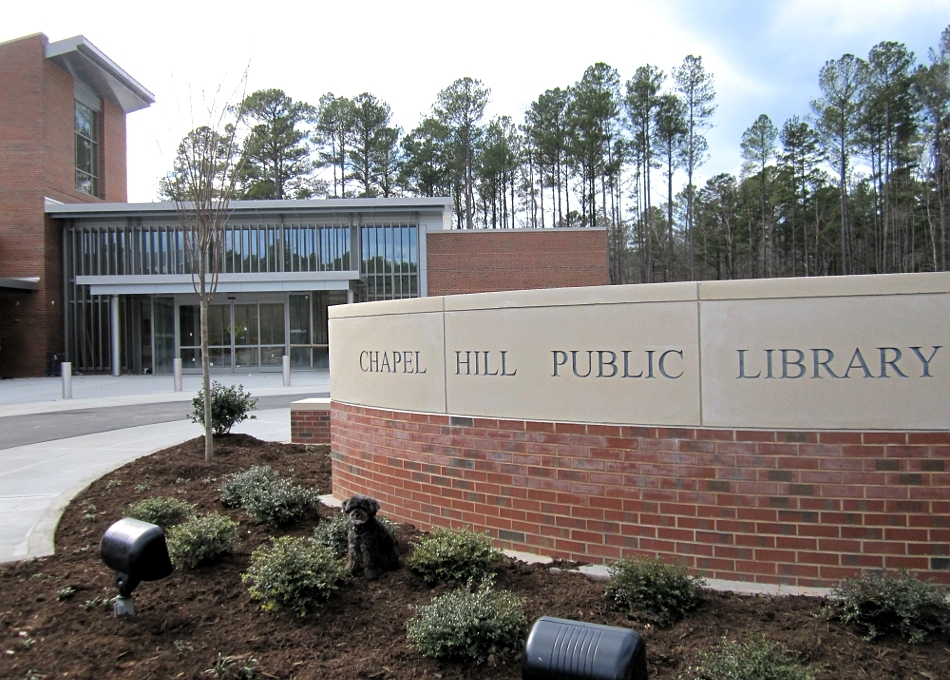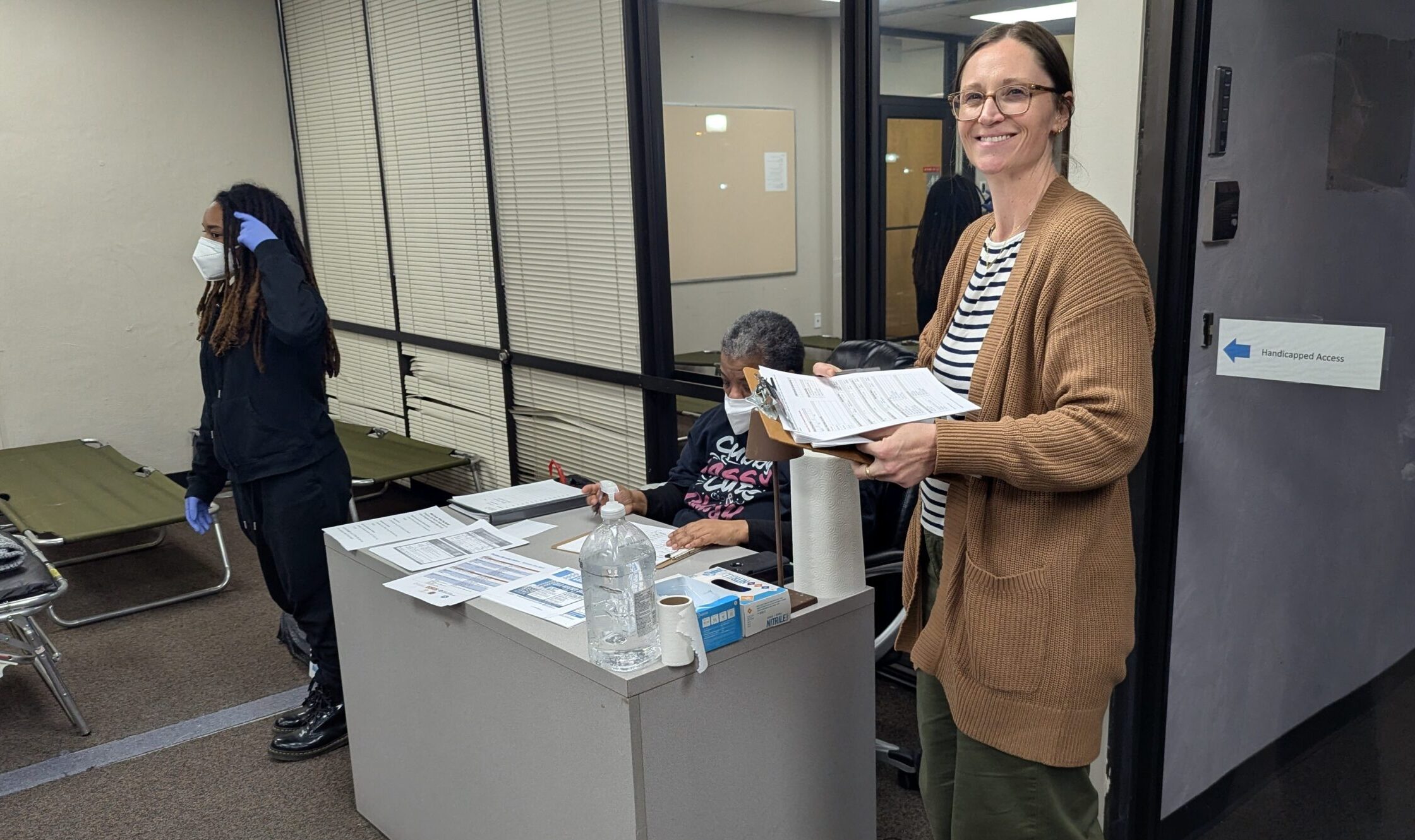Orange County received the Excellence in Innovation Award from the North Carolina Association of County Commissioners, on Monday night, for the Naloxone Project, which has saved the lives of four people who have overdosed on opioids.
Officers across the county have started carrying naloxone kits, which help combat the effects of a heroin overdose.
“With naloxone it’s really neat because it builds a bridge,” said Captain Chris Atack of the Carrboro Police Department. “You basically have more time to get that person to medical facilities where they can bring that person out of that danger.”
He said it cost his department $700 to train and supply all of their officers.
During an opioid overdose, the brain tells the body to stop breathing. Sheriff Charles Blackwood said naloxone starts the breathing process again, but in a way that is safe for both officers and the person involved.
“When you have someone that may come out of an opioid overdose they’re violent, often times very violent, to the point you’d rather they go back to sleep” he said. “But sleep is death. This minimal dose will allow you to start breathing again, but you don’t come back in a combative state.”
Orange County is the first health department to take advantage of the 2013 Good Samaritan/Naloxone Access legislation, allowing doctors, family and friends to administer naloxone to someone who overdoses on opioids, without being prosecuted.
“Naloxone, also known as Narcan, quickly and effectively reverses overdose, if administered in time. This program places Orange County on the map, leading the way for other communities to follow this cost effective, life-saving example,” said Dr. Colleen Bridger, director of the Orange County Health Department.
Because of Orange County regulation, before EMS is allowed on the scene, police officers must arrive first and make sure it is safe for unarmed personnel.
“It may take (EMS) a minute or two, three minutes depending on where they’re staging, so if the officer can do that quick assessment, assemble the kit and administer that naloxone, you’re talking minutes,” Atack said. “Minutes when you’re running out of oxygen, when you’re brain is starving, when you may go into cardiac arrest because there’s not enough oxygen, can really save a life.”
Kim Woodward of Orange County EMS said medical staff has been carrying naloxone for nearly 30 years and due to changes made in 2013, non-medically trained officers are now able to carry it as well.
“Because the Good Samaritan Law expanded, it allowed lay-folks to give the naloxone,” she said. “If lay-folks can give the naloxone, then non-medically trained folks, such as our law enforcement, could give the naloxone as well.”
Atack said heroin use across Orange County is on the rise due to the federal government making it harder for people to get prescription opioids.
“It’s a second or third chance at life for someone to get clean,” he said. “I’ve seen neighbor’s kids suffer with addiction and I can’t imagine dealing with that on a daily basis so anything we can simply do to give someone a shot to get right.”
Officers in Chapel Hill, Carrboro and across the rest of Orange County are now trained and carrying naloxone kits.
Blackwood said 97 percent of his staff has been trained.
Related Stories
‹

FDA Approval of Naloxone Could Mean More Access, Less Stigma for Addressing OverdosesThe FDA recently approved naloxone as an over-the-counter drug to help with opioid overdoses. Here's how that could change things on the local level.
![]()
North Carolina AG on Opioid Epidemic: 'We Don't Imprison People for Other Illnesses'There has been a paradigm shift in how law enforcement is handling the opioid crisis in North Carolina. According to Carrboro police captain Chris Atack, this is a shift from punishing addicts to, in some cases, saving their lives. “I think the opioids have kind of given us a window to shift our paradigm a […]
![]()
In Orange County and Across the Nation, Heroin Use is on the RiseA new report from the Centers for Disease Control shows heroin use is on the rise across the nation. That’s true in Orange County too. A recent undercover drug operation by the Orange County Sheriff’s Office netted nearly 700 doses of heroin. Narcotics Investigator Brandon Wilkerson says he wasn’t surprised. “It’s really not new; it’s […]

Orange County Reports Positive Rabies Test After Person Bitten By RaccoonOrange County Animal Services has reported a positive rabies test on a raccoon which was taken in for testing last week. According to OCAS, the raccoon bit a person after the person tried to “relocate” the animal. The incident occurred Dec. 26 near Pearson Road in Hurdle Mills in northern Orange County. The department reminded […]

Orange County Public Transportation Piloting Fare-Free Model in 2026Orange County Public Transportation will be piloting a one-year, fare-free model for its fixed-route transit services beginning Jan. 2, 2026. The Orange County Board of Commissioners approved the move at its Dec. 9 meeting. In a press release, the county government hailed the move as “an important step in testing strategies to expand mobility, promote […]

Orange County Communities to Interrupt Services for December Holidays (2025)Communities around Orange County will interrupt their normal service schedules during the upcoming winter holidays. Here’s what customers can expect: Town of Chapel Hill Town of Chapel Hill government offices will be closed from Wednesday, Dec. 24 through Friday, Dec. 26. Residential trash collection will not be affected. Yard trimmings will not be collected on […]

The Filing Period For 2026 Elections Is Over. Who’s Running in Orange County?As 2025 begins to wind down, many are already looking ahead to the 2026 midterm elections across the country — with the filing period for races in North Carolina ending on Friday. As of Dec. 19, candidates for federal, state and local offices can no longer file to formally begin their campaigns for the 2026 […]

'They Are Safe': How and Why Orange County Activates, Operates its Cold Weather ShelterFor the last four years, whenever winter temperatures drop to freezing, the Orange County Partnership to End Homelessness and other local government staff team up to provide an overnight shelter option.

Orange County Sheriff's Office Details String of Break-Ins, Larceny Charges Against 2 TeenagersThe Orange County Sheriff's Office formally announced criminal charges against a pair of 18-year-olds for a string of break-ins in November.
![]()
On Air Today: 'Naloxone Near Me,' with Delesha CarpenterAaron welcomes UNC's Delesha Carpenter to discuss "Naloxone Near Me," a new statewide initiative that could save lives.
›








